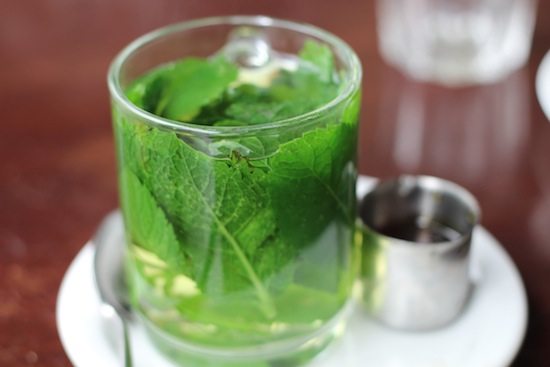What exactly is tea?
Tea is a hot drink that’s made by pouring boiling water on the leaves of the camellia sinesis plant. This leaf originates from Asia, and has been used to make tea for over 3,000 years. It’s important to note that real tea is made specifically from camellia leaves. There are many “tea” varieties that contain fruit and herb blends, and although they are very tasty, they are not tea.
So how do I know what “tea” is the real tea?
The three main types of teas made from the camellia plant are green tea, black tea, and white tea. The difference between them lies in how they are processed.
- Green tea: Camellia leaves are spread out to dry, so that the water content can be reduced. After the leaves are dried, they are heated, rolled and dried once again. The dried leaves are usually still green in color. This variety of tea is minimally processed, and involves little to no oxidation.
- Black tea: Camellia leaves are spread out to dry, and are then heavily rolled. The rolling process allows oxygen to react with the enzymes in the leaf, and this is where oxidation begins. The leaves are left to oxidize, and as a result, a deep black color is formed. After this, the leaves are dried again. The oxidation process results in a bitter tasting tea.
- White tea: Immature camellia leaves are heated to prevent oxidation, and then dried. This simple process results in minimally processed tea.
Other varieties include oolong, yellow, and post-fermented tea.
Why is tea beneficial for my health?
- Tea leaves contain flavanoids, which have anti-inflammatory activity in the body. They are also high in anti-oxidant activity, which may neutralize the harmful effects of free radicals.
- Tea has been proven to display positive effects on normalizing blood pressure, and playing a role in the prevention of heart disease and diabetes, by reducing blood glucose activity.
- Research has shown that green tea has significant protective effects against various types of cancers, including pancreatic, breast, and ovarian cancer.
- White tea has been shown to slow virus and bacteria growth.
- Black tea has been shown to improve the functioning of blood vessels, resulting in a decreased risk for heart disease.
So which one should I drink?
As you can see, all derivatives of the camellia plant offer a plethora of health benefits. Each tea also offers distinct flavors, so try them all out and see which one best suites your palate!


Hello ladies, so what about Chamomile tea? Since it is a herbal blend is is less healthy and not considered a true “tea”?
Thanks.
-Craig
Correct- it is not a true tea, since it doesn’t come from the camellia leaf. As a herb, it does offer plenty of benefits though- just not the same as tea’s benefits.